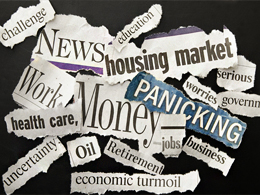 One of the ideas I play with occasionally is that of long-term social cycles. Strauss and Howe’s book The Fourth Turning is a good example of how demographic cycles can alter society; it’s also a recommended read.
One of the ideas I play with occasionally is that of long-term social cycles. Strauss and Howe’s book The Fourth Turning is a good example of how demographic cycles can alter society; it’s also a recommended read.
Other examples that have affected society and the economy run from The Man in the Gray Flannel Suit in the 1950s, to the counterculture of the 1960s, to the Greed Is Good era of the 1980s, which has continued pretty much unabated until now, with the rise of the tech economy and the financial economy. The business of America has been business, with CEOs serving as heroes and government seen as more of a problem than a cure. And that may be changing.
A time reminiscent of the Gilded Age
Looking a bit further back, the period that most resembles the present is the Gilded Age, that time in the late 1800s when there was tremendous economic growth but also tremendous inequality. Financial markets boomed, new technologies (e.g., the railroad) opened up communications and shipping, and enormous fortunes were made even as the life of the average person continued to be difficult.
As companies grew, they gained confidence and started to push the envelope. Massive scandals arose when muckrakers performed investigations like the one laid out in Upton Sinclair’s The Jungle, which exposed horrible conditions in the meat packing industry, and eventually the public demanded more regulation and more equality.
Sound familiar?
Post-Gilded Age, the country changed. Labor unions arose, regulation increased, and the government took a much larger role in the economy. Not least, in 1913, the first permanent federal income tax—7 percent on incomes over $500,000—was created. It took a constitutional amendment to do it, but the amendment went through with overwhelming support.
A sign of changing times?
What made me think of these issues are two recent news stories. The first is about a young man who bought an old drug and attempted to raise the price by 50x with essentially no justification. The second is the news that Volkswagen designed software specifically to fool emissions testing systems and evade regulations.
Starting with the drug price increase, what is surprising about this is not that it happened—similar things have happened for years—but that it became news. This has been a standard business model, and in fact the federal Medicare program is forbidden to negotiate drug prices, so it has been a successful one. The egregious nature of this incident helps make it newsworthy, as does the background of the CEO, but the real issue is that profit maximizing is now under congressional scrutiny. Where 10 or 20 years ago, this would not have been a problem, now it is. Things are changing.
Turning to the VW fiasco, clearly, the company considered itself above the law. Clearly, it made a conscious decision—at the very highest level—to deliberately game the regulations. And, clearly, the company either did not consider or did not care about the consequences. Whether it was because leaders thought they were too smart to get caught or the consequences would be minor does not really matter. If, as is quite possible, VW is not the only company that has done this, then it would signal again that companies consider themselves above regulation. Governments hate that, but over the past 40 years, they have not really done anything to curb it. Now, that looks to be changing.
What does this mean for investors?
Although this ongoing trend has been slow, it appears to have reached the point where the consequences for business are serious. What does this mean for investors? Probably higher taxes, since two of the major Republican candidates are looking to raise some taxes on the wealthy. Probably lower returns, as regulations and stricter enforcement hit companies’ abilities to innovate and profit. Business as usual might not be as usual as it has been.
From a business perspective, the past 40 years have been a gilded age—and that has been wonderful for investors. Nothing lasts forever, though, and there are signs that the tide may be turning. The fact that the two leading presidential candidates (at this point) are a billionaire with many left-wing views (government health care and higher taxes on the rich) on the Republican side and a Socialist (a real one, not just a label) on the Democrat side suggests that our current Gilded Age may be giving way, as it did a century ago, to a new Progressive Era.


 Print
Print


